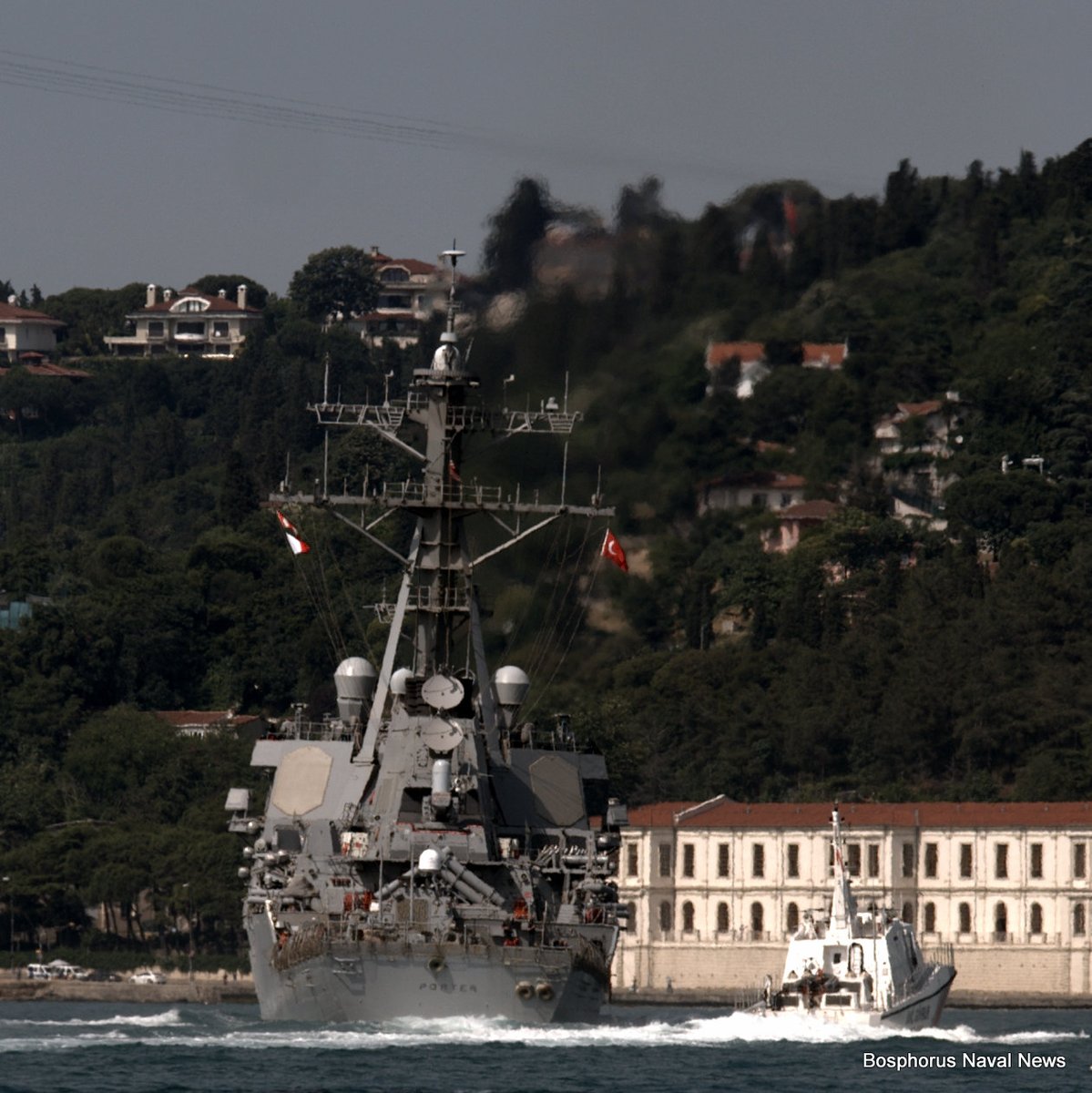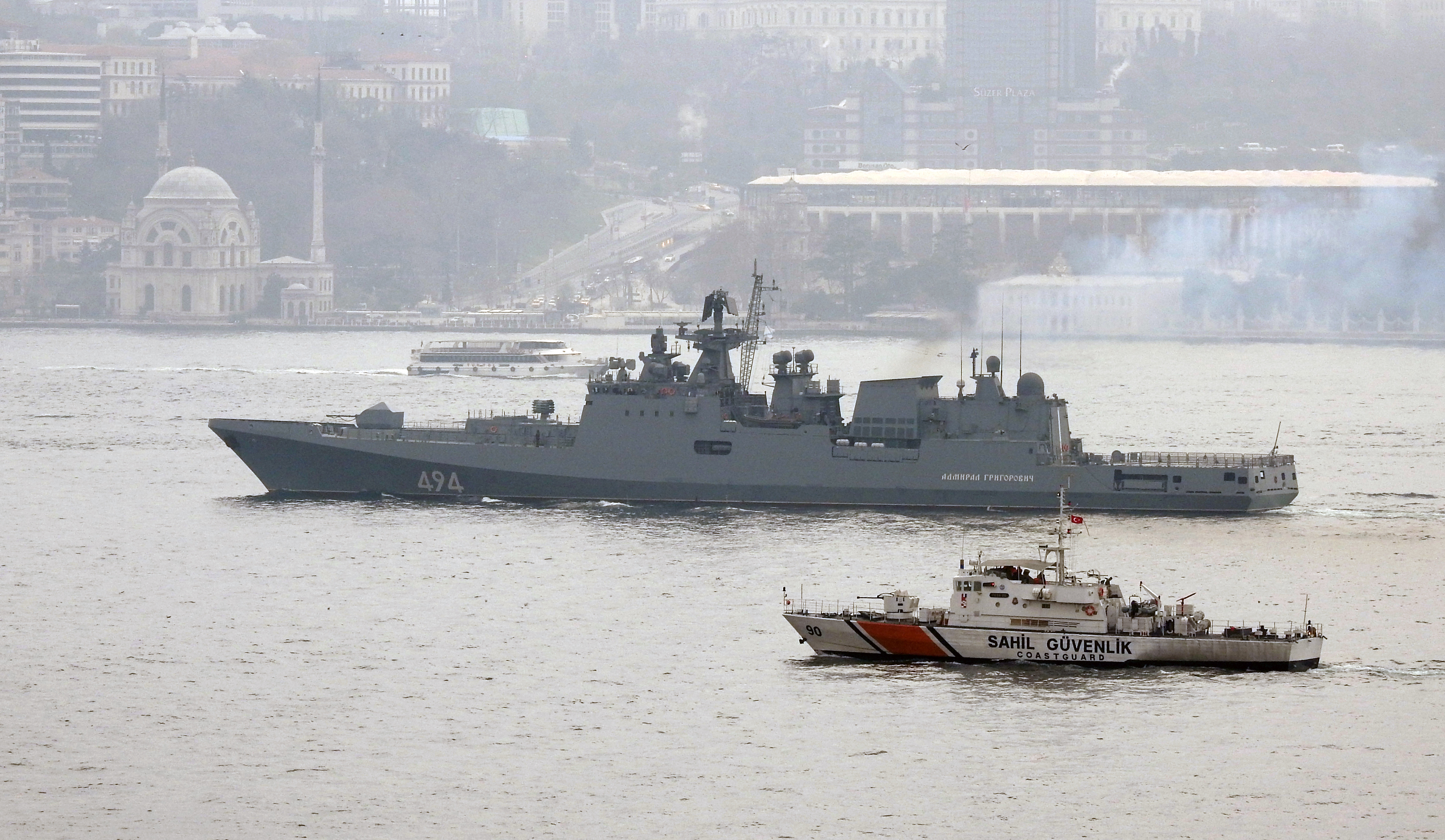Russia Sends Frigate to Mediterranean Following U.S. Retaliation Strike; U.S. Destroyers Remain On Station
By: Sam LaGrone
USNI News
The Russian Navy has sent its most advanced Black Sea frigate into the Eastern Mediterranean on Friday following a U.S. missile strike on a Syrian airfield, according to ship spotters in Turkey.
Guided missile frigate Admiral Grigorovich – based in Sevastopol, Crimea – passed through the Bosporus Strait early Friday into the Mediterranean only hours after two U.S. guided missile destroyers fired 59 Tomahawk Land Attack Missiles that targeted the al-Shayrat Airfield in central Syria.
Ship spotter Yörük Işık told USNI News the frigate was only in port for nine days before heading back to the Mediterranean and crossing the strait shortly after the U.S. strike.
The 4,000-ton frigate fields up to eight of the Russian Kalibir NK long range land attack cruise missiles – first used operationally in 2015 from Russian Navy ships in the Caspian Sea to strike targets in Syria.
Late last year, Grigorovich operated with the Kuznetsov carrier strike group off of Syria and fired missiles in support of the Russian-Syrian assault against rebels in Aleppo in November.
The Kremlin was quick to condemn the strike on the Syrian airfield which the U.S. alleges was the point of origin for a Tuesday chemical weapons attack on the city of Khan Sheikhoun. The strike by Assad government forces is believed to have killed dozens.
Russian and Syrian officials placed the blame on the strike on Islamic State forces.

USS Porter (DDG-78) crossing the Bosporus Strait on June 6, 2016. Bosporus Naval News Photo used with permission
As for the U.S., a Navy official on Friday told USNI News that destroyers USS Porter (DDG-78) and USS Ross (DDG-71) would continue a presence mission in the Eastern Mediterranean.
The ships are part of a quartet of U.S. destroyers that are forward deployed to Rota, Spain to primarily conduct ballistic missile defense operations in protection of Western Europe. However, the proximity of the ships to Syria and the ease of rearming them following Thursday’s strike made Ross and Porter ideal for the mission, the official said.
“Having these four ships forward deployed to the Med has been a huge help and it gives [leaders] this fast strike option,” the official said.
On Friday, the head of U.S. Naval Forces Europe-Africa praised the crews of the destroyers.
“I just want to say that the commanding officers of both those ships, Russ Caldwell and Andria Slough, performed magnificently, along with their crews,” said Adm. Michelle Howard in a statement provided to USNI News.
“What is also important is that this was a cross-combatant commander mission, and that the integration of the operations cells and all of the teams supporting from the planning to the execution was just flawless. It’s an example of the strength of the United States Navy and our ability to project power around the globe.”
The Tomahawk strike was the largest combined use of missiles since the first day Operation Odyssey Dawn on March 19, 2011 in which the Navy launched more than 100 Tomahawks from destroyers and nuclear guided missile submarine USS Florida (SSGN-728) against Muammar Gaddafi regime forces.

